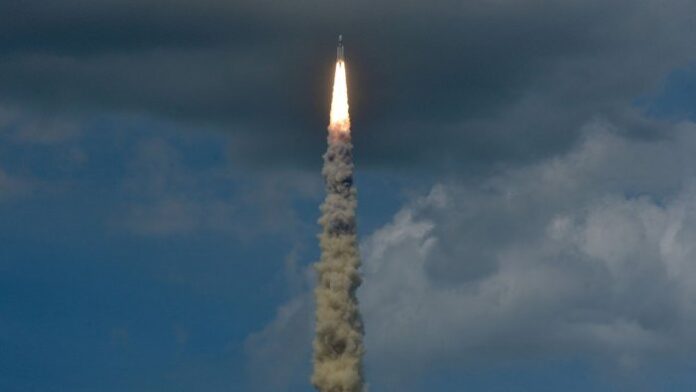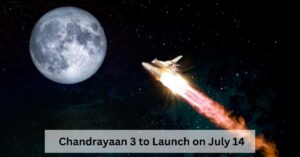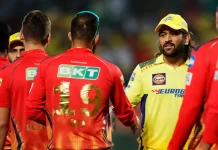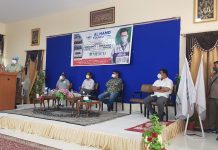India’s third moon mission, Chandrayaan-3, was successfully launched onboard a Launch Vehicle Mark-3 (LVM-3) rocket from the second launch pad at the Satish Dhawan Space Centre in Sriharikota at 2.35 pm on July 14.
On July 14, at 2:35 p.m., a Launch Vehicle Mark-3 (LVM-3) rocket carrying India’s Chandrayaan-3 moon mission was successfully launched from the Satish Dhawan Space Centre in Sriharikota’s second launch pad.
Only the United States, Russia, and China have accomplished soft landings on the moon so far.
Following the successful launch, ISRO Chairman S. Somanath told media that the following 42 days are essential. “According to the schedule, we will do five earthbound movements, which will come to a close on July 31. The trans-lunar insertion follows, and it will happen on August 1. It will then be captured by the moon.On August 17, the propulsion module and the lander module will separate after this. If all goes according to plan, the landing is currently scheduled for August 23 at 5:47 p.m. IST, the speaker continued.
The Chandrayaan-3 mission, according to ISRO, has three main goals:
demonstrate a gentle and safe landing on the Moon’s surface, run rover operations there, and conduct on-site research there.
According to S. Somanath, Chairman of the Indian Space Research Organisation (ISRO), the mission’s Vikram lander is scheduled to soft-land on the Moon’s South Pole region on August 23 at 5:47 p.m. The lander for the forthcoming expedition has undergone significant improvement, according to Mr. Somanath. This entails giving the lander stronger “legs,” the capacity to endure a faster descent speed, and a switch from five to four engines. We’ve also increased the propellant’s volume, and the solar panels now cover more ground. Additionally, new sensors have been added,” he added.
The sole spaceport in the nation where satellites and spacecraft are launched is the SDSC. Initially called as SHAR (Sriharikota Range), it became operational on October 9, 1971, with the launch of the small-sounding rocket “Rohini-125”. To celebrate mathematician and former Isro Chairman Satish Dhawan, the space centre was renamed Satish Dhawan Space Centre SHAR in September 2002.
India is attempting a soft landing for the second time after Chandrayaan-2, its last attempt, failed in 2019. Chandrayaan-1, its first lunar probe, orbited the moon before being purposefully crash-landed onto the lunar surface in 2008.
When Chandrayaan-2 successfully landed the Vikram lander and Pragyan rover close to the Moon’s South Pole in 2019, it grabbed everyone’s attention. But there were some minor difficulties for the endeavour. While trying to land on the moon, the Vikram lander from Chandrayaan-2 had crashed. Despite the incident, it nonetheless represented a major accomplishment in India’s space history.
Chandrayaan-3, created by the Indian Space Research Organisation (ISRO), consists of a lander, a propulsion module, and a rover. In order to gather information and carry out a number of scientific tests to better understand the makeup of the moon, it will safely land there.
Only the United States, Russia, and China have successfully completed the challenging task of soft-landing a spacecraft on the moon’s surface.
On the launch, Indian engineers have been working for many years. They intend to set down Chandrayaan-3 close to the difficult terrain of the undiscovered South Pole of the moon.
Chandrayaan-1, India’s first lunar mission, found water molecules on the moon’s surface. The Chandrayaan-2 successfully entered lunar orbit eleven years later, but its rover impacted the moon’s surface. It was also planned to investigate the South Pole of the moon.
Despite the mission’s failure, Indian Prime Minister Narendra Modi praised the engineers behind it and pledged to continue working on India’s space programme and goals.
Just prior to the launch on Friday, Modi promised that the occasion “will always be etched in golden letters as far as India’s space sector is concerned.”



































